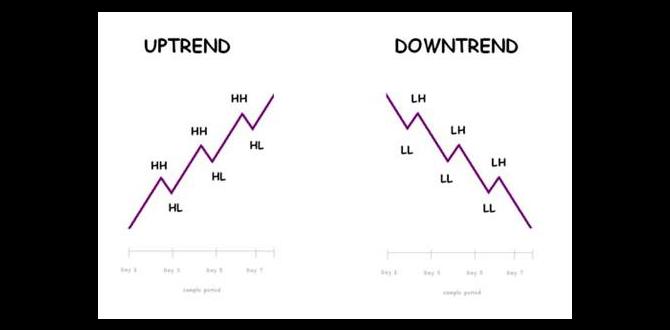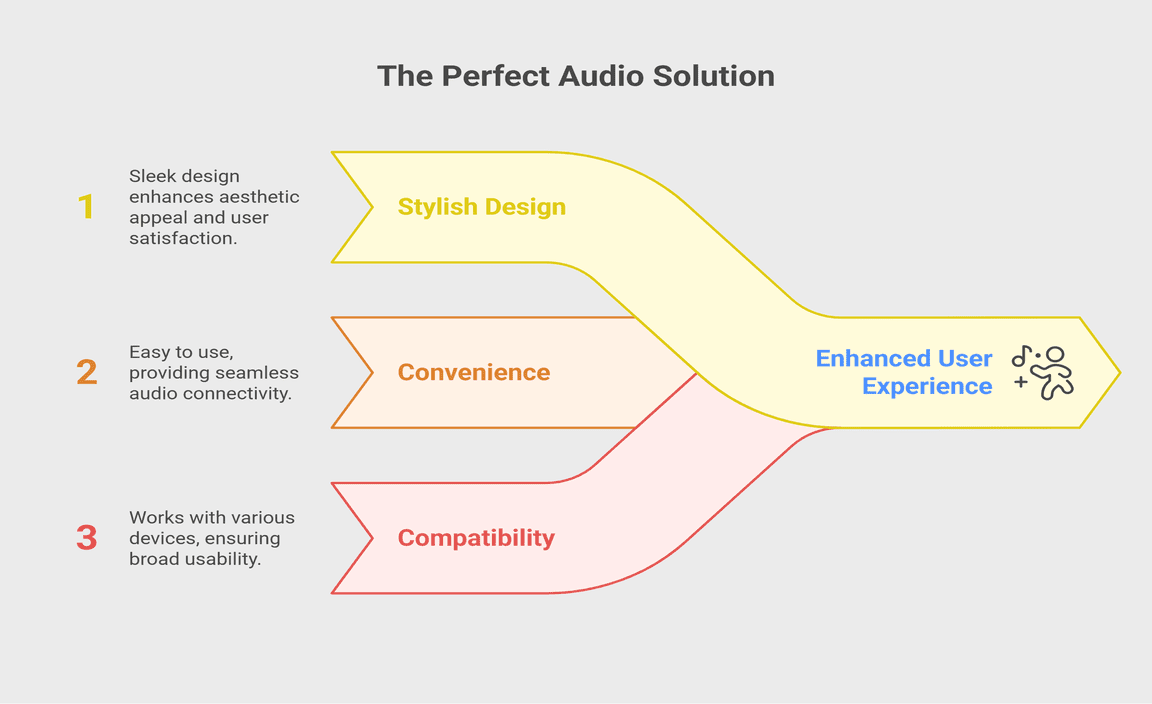Quick Summary: Proper RV battery winter storage involves fully charging batteries, disconnecting them, and storing them in a cool, dry place (above freezing) to prevent damage and ensure they’re ready for spring. Regular charging and checks are crucial for longevity.
Hey there, fellow adventurers! Roy Walker here. If you’re like me, your RV is your ticket to freedom and fun. But when the chilly winds start to blow, it’s time to think about putting your RV to bed for the winter. And a big part of that is taking care of your RV’s batteries. Neglecting them can lead to a dead battery come springtime, which is a surefire way to sour your first trip of the new season. Don’t worry, it sounds more complicated than it is! We’ll walk through exactly how to keep your RV batteries happy and healthy all winter long. Let’s dive in and make sure you’re ready for your next adventure the moment the snow melts!
Storing RV Batteries: Proven Winter Care
Winterizing your RV is an essential process to protect it from the harsh elements and prevent costly damage. While many focus on draining water tanks and covering the exterior, the RV batteries often get overlooked. These powerhouses are critical for running lights, appliances, and other systems when you’re off the grid. Properly storing your RV batteries over the winter is not just about convenience; it’s about preserving their lifespan, preventing them from freezing, and ensuring they’re ready to go when the camping season calls again.
Don’t let confusing battery jargon scare you. Think of me as your trusted mechanic, here to explain things in plain English. We’ll cover everything from understanding battery types to the simple steps for setting them aside for the cold months. By following these proven methods, you can avoid common winter battery problems and save yourself a headache (and money!) next spring.
Why Winter Battery Care Matters
Batteries are sensitive to temperature and discharge levels. Cold weather can significantly impact their performance and capacity. If a battery discharges too much and then freezes, the water in the electrolyte can turn to ice, expand, and crack the battery case. This is an irreversible and dangerous situation. Furthermore, deep discharges weaken lead-acid batteries over time, reducing their overall lifespan. Proper storage ensures your RV batteries remain in good health, ready to power your adventures when the warmer weather returns.
Understanding Your RV Battery Types
Before we get into the “how-to,” it’s important to know what kind of batteries you’re dealing with. The most common types found in RVs are:
- Deep-CycleLead-Acid Batteries: These are the workhorses for RVs. They are designed to provide a steady stream of power for long periods and can be discharged more deeply than car batteries. They come in several subtypes:
- Flooded Lead-Acid (FLA): The most traditional and often most affordable. They require maintenance, such as checking water levels.
- Sealed Lead-Acid (SLA): Also known as maintenance-free batteries, these include both Gel and Absorbed Glass Mat (AGM) batteries. Gel batteries use a gelled electrolyte, while AGM batteries use fiberglass mats to absorb the electrolyte. They are sealed and don’t require watering but can be more sensitive to charging voltages.
- Lithium Iron Phosphate (LiFePO4) Batteries: These are increasingly popular due to their lighter weight, longer lifespan, faster charging, and deeper discharge capabilities. They also have a more consistent voltage output. While they are more expensive upfront, their longevity and performance can make them cost-effective over time.
The storage method can vary slightly depending on the battery type. However, the core principles of keeping them charged and above freezing remain consistent.
Step-by-Step Winter Battery Storage Guide
Let’s break down the process into manageable steps. You don’t need to be an expert to follow along. We’ll cover what you need and what to do.
Step 1: Fully Charge Your Batteries
This is the MOST important first step. A fully charged battery is less susceptible to freezing and damage. Use your RV’s built-in charging system, a shore power connection, or a quality battery charger. Ensure the charger is appropriate for your battery type (lead-acid or lithium) and has a “float” or “maintenance” mode for long-term charging. If you’re unsure about your RV’s charging system, consult your owner’s manual or a professional.
For lead-acid batteries, a full charge means reaching a specific voltage. For example, a 12-volt flooded lead-acid battery is considered fully charged around 12.7V to 12.8V (static, no load, after resting). AGM and Gel batteries might have slightly different optimal charge voltages. Lithium batteries are generally charged until their Battery Management System (BMS) indicates full, typically around 100% state of charge.
Pro Tip: If you have flooded lead-acid batteries, check and top off water levels with distilled water after charging, as the electrolyte expands when fully charged.
Step 2: Thoroughly Clean the Batteries
Dust, dirt, and corrosion can build up on battery terminals. This buildup can cause a slow drain on the battery and lead to corrosion, which harms connections. Use a wire brush and a mixture of baking soda and water to clean terminals and cable connectors. Rinse thoroughly with clean water and dry completely. A thin coat of dielectric grease or petroleum jelly on the terminals after cleaning helps prevent future corrosion.
Step 3: Disconnect the Batteries
Once fully charged and clean, it’s time to disconnect the batteries. This prevents any phantom drains from RV systems that might still draw power, even when the RV is “off.” Disconnect the negative (black) cable first, then the positive (red) cable. This order prevents accidental short circuits if your wrench touches the RV chassis while loosening the positive terminal. Store the cables safely away from the battery terminals.
Step 4: Choose a Suitable Storage Location
The ideal storage location is cool, dry, and protected from extreme temperatures, but importantly, it must stay above freezing (32°F or 0°C). Batteries can be damaged if the electrolyte freezes. Freezing is more likely with batteries that are not fully charged.
Good options include:
- An unheated garage or shed
- A basement (if dry and well-ventilated)
- Inside the RV itself, if it’s stored in a climate-controlled environment or a location where temperatures reliably stay above freezing without any additional heating.
Avoid storing batteries in areas prone to:
- Extreme temperature fluctuations
- Direct sunlight
- Areas with high humidity or moisture
- Locations where they could be physically damaged
Safety Note: Batteries, especially lead-acid types, can release hydrogen gas. Ensure the storage area is well-ventilated to prevent any buildup of flammable gases.
Step 5: Consider Battery Type and Storage
While the general principles apply, there are some nuances:
- Flooded Lead-Acid: These definitely need to be kept above freezing. If storing them long-term outside the RV, consider removing them from the battery tray to prevent accidental damage or moisture contact.
- AGM/Gel Batteries: These are sealed and don’t require watering. They are generally more robust than flooded batteries but still need to be kept charged and above freezing.
- Lithium (LiFePO4) Batteries: Lithium batteries are more forgiving of temperature extremes and self-discharge very slowly. Most LiFePO4 batteries have built-in low-temperature protection that prevents charging below a certain temperature (often around freezing). They can typically be stored at lower states of charge than lead-acid batteries. However, it’s still best practice to store them cool and dry, and above freezing if possible, to maximize longevity. Check your specific lithium battery’s manual for recommended winter storage practices.
Step 6: Implement a Recharging Schedule (Crucial for Lead-Acid)
This is where many campers fall short. Lead-acid batteries naturally self-discharge over time. If left dormant, they can discharge too deeply, leading to damage and reduced lifespan. Lithium batteries self-discharge much slower but still benefit from an occasional check.
For all lead-acid batteries (flooded, AGM, Gel):
- Plan to check their charge level and recharge them every 1-2 months during the winter.
- Discharge is faster in colder temperatures, but charging can be problematic below freezing for lead-acid types. If storing in a very cold location, you’ll need to bring them indoors to charge.
- A smart, multi-stage charger with a float mode is your best friend here. It will maintain the charge without overcharging.
For Lithium LiFePO4 Batteries:
- They self-discharge at a rate of about 1-3% per month. You can likely get away with checking and topping them off every 3-6 months.
- Again, consult your battery’s manual. Some have low-voltage disconnects that could eventually drain them if left connected to a load.
A small, battery-powered battery monitor can be helpful for keeping an eye on voltage levels without constantly connecting and disconnecting chargers.
Step 7: Consider Battery Tend ers or Trickle Chargers
For batteries stored inside your RV (and confirmed to be above freezing), a battery tender or trickle charger is an excellent investment. These devices are designed to maintain a full charge on a battery without overcharging it, delivering a small amount of power only when needed. This is the ideal way to keep your batteries healthy throughout the winter without repeated manual intervention.
A quality charger like this one from Schumacher (or a similar reputable brand) can be set up and left connected for months. It automatically switches between charging and monitoring modes.
Step 8: When Spring Arrives – Post-Storage Check
Before you head out on your first trip, perform a few checks:
- Visual Inspection: Look for any signs of damage, leaks, or corrosion that might have occurred during storage.
- Clean Terminals: Give the terminals and connectors a quick clean and ensure a solid connection.
- Check Voltage: Use a multimeter to verify the battery’s state of charge. A fully charged 12V lead-acid battery should read around 12.6-12.8V. A lithium battery should be close to its nominal voltage for its state of charge.
- Charge as Needed: Top off the charge if necessary.
- Reconnect Correctly: Reconnect the positive (red) cable first, then the negative (black) cable.
- Test Systems: Power up your RV systems and test lights, appliances, and anything else that relies on battery power.
Table: Winter Battery Storage Checklist
Here’s a quick rundown to keep you on track:
| Task | Description | When | Notes |
|---|---|---|---|
| Fully Charge Batteries | Ensure batteries are at 100% capacity. | Before storage (Fall) | Use appropriate charger. Crucial for lead-acid. |
| Clean Terminals | Remove dirt, dust, and corrosion. | Before storage (Fall) | Use baking soda/water & wire brush. Apply dielectric grease. |
| Disconnect Batteries | Separate from RV systems. | Before storage (Fall) | Negative cable first, then positive. |
| Choose Storage Location | Cool, dry, and above freezing. | Before storage (Fall) | Avoid extreme temps, direct sun, humidity. Ensure ventilation. |
| Connect Charger/Tender | Set up a maintenance charger if possible. | Before storage (Fall) | Recommended for long-term storage. |
| Regular Checks & Recharging | Monitor charge level and recharge as needed. | Every 1-2 months (Lead-Acid) Every 3-6 months (Lithium) |
Bring indoors to charge if below freezing. Crucial for lead-acid. |
| Post-Storage Inspection | Visual check, clean terminals, verify charge. | Spring (Before first trip) | Reconnect carefully. Test all systems. |
Common Winter Battery Problems and How to Avoid Them
Let’s talk about what can go wrong and how to steer clear of these pitfalls.
Problem 1: Freezing and Cracking
- Cause: Storing a discharged battery in temperatures below 32°F (0°C).
- Solution: Always fully charge batteries before storage. Store them in a location that stays above freezing. For lead-acid batteries, a full charge significantly lowers the freezing point of the electrolyte.
Problem 2: Irreversible Capacity Loss
Cause: Repeated deep discharges or allowing batteries to sit in a discharged state for extended periods, especially lead-acid types.
- Solution: Fully charge your batteries before storage. Regularly check and recharge them throughout the winter months. Use a quality smart charger with a float mode to maintain optimal charge.
Problem 3: Corrosion
Cause: Moisture, dirt, and chemical reactions on the battery terminals and connections.
- Solution: Thoroughly clean battery terminals and cable ends before storage. Apply a protective coating like dielectric grease or petroleum jelly.
Problem 4: Premature Battery Death
Cause: A combination of the above issues, leading to a battery that won’t hold a charge or perform reliably.
- Solution: Diligent adherence to the storage steps outlined above – especially charging and periodic checks – is the best insurance against premature battery failure.
Battery Maintenance Chargers: A Smart Investment
I can’t stress this enough: a good battery maintenance charger (often called a battery tender or trickle charger) is one of the best tools for any battery owner, especially for seasonal vehicles like RVs. These aren’t just simple chargers; they are intelligent devices.
How they work:
- Full Charge: They bring your battery up to a full charge.
- Monitoring: They constantly monitor the battery’s voltage.
- Float Charge: If the voltage drops slightly (due to self-discharge), they deliver a small amount of power to bring it back up to full charge, then stop. This is the “float” or “maintenance” mode.
- Low-Temperature Compensation: Many modern tenders can adjust their output voltage based on ambient temperature, which is crucial for charging lead-acid batteries safely in cooler conditions.
Investing in a quality charger from brands like CTEK, Noco, or Schumacher can save you money in the long run by extending the life of your RV batteries. You can find reliable options on sites like Amazon or at your local auto parts store or RV supply shop. Look for one that matches your battery type (lead-acid, AGM, Gel, Lithium).
External Link: Understanding Battery Technology Specs
For those who want to dive deeper into the technical reasons behind battery care, the U.S. Department of Energy’s Office of Energy Efficiency & Renewable Energy provides fantastic resources on various battery technologies, including their performance characteristics under different conditions.
FAQs about Storing RV Batteries
Here are some common questions I get about winter battery storage:
Q1: Do I need to remove my RV batteries for winter storage?
A1: It’s often recommended, especially if your RV is stored outdoors or in an area where temperatures might drop below freezing. Removing them allows you to store them in a more controlled environment. If your RV is in a heated or climate-controlled facility and the batteries are safe from freezing, they can often stay in place, connected to a good maintenance charger.
Q2: Can I leave my RV batteries connected to shore power all winter?
A2: Generally, yes, if your RV has a quality built-in converter/charger designed for long-term maintenance charging. However, be aware that some older or simpler converters might overcharge batteries, which can damage them. It’s best to use a dedicated smart battery tender for long-term storage or ensure your RV’s system is designed for it and monitor it periodically.
Q3: What happens if my RV battery freezes?




